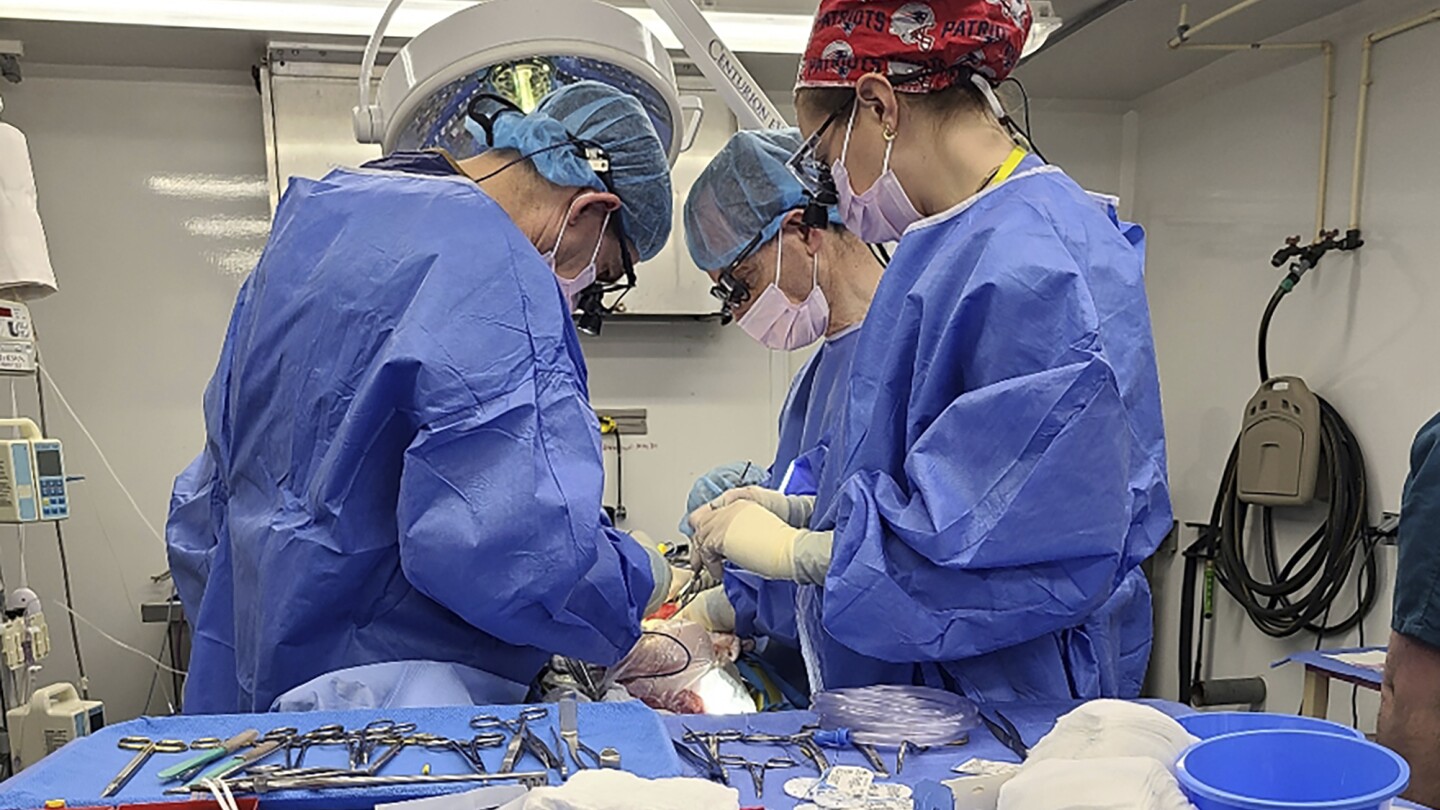Groundbreaking experiment shows how pigs can help people with liver failure

A team of surgeons connected a pig liver to a brain-dead human body and watched as it successfully filtered blood. This is a step towards the possibility of using the technique in patients with liver failure.
The University of Pennsylvania announced Thursday a groundbreaking experiment that uses a new strategy for animal-to-human transplantation. In this case, the pig’s liver was used outside the donated body rather than inside, creating a “bridge” that could help the diseased liver do the job of cleaning the blood from the outside, like a kind of dialysis.
Animal-to-human transplants, called xenografts, have failed for decades because the person’s immune system rejects the foreign tissue. Now scientists are again trying experiments with pigs whose organs have been genetically modified to make them more human-like.
In recent years, kidneys from genetically modified pigs have been temporarily transplanted into brain-dead donors to test their function, and two men have received pig heart transplants, although both died within months.
The US Food and Drug Administration is considering allowing a small number of Americans in need of a new organ to voluntarily participate in rigorous studies involving pig hearts or kidneys.
Some researchers also want to use pork liver. The liver is designed differently than the kidneys or heart: it filters blood, removes waste, and produces substances needed for other body functions. In the United States, about 10,000 people are currently on the waiting list for a liver transplant.
In the University of Pennsylvania experiment, researchers connected a pig liver genetically modified by eGenesis to a device made by OrganOx, which typically helps preserve donated human livers before transplantation.
The family of the deceased, whose organs were not suitable for donation, offered the body for research. With the help of machines, they maintained blood circulation in the body.
In the experiment, which took place last month, blood was filtered through a device made from pig liver for 72 hours. In a statement, the university team said the donor’s body remained stable and the pig’s liver showed no signs of deterioration.
Much work is being done to develop equipment that works similar to liver dialysis, and experiments with pig liver were done many years ago, before the advanced genetic techniques available today, explained Dr. Parsia Vaghefi of UT Southwestern Medical Center, who did not participate in the research. a new experiment, but closely related to xenotransplantation research.
“I applaud them for moving this project forward,” Vagefi said, calling this pig-device combination an interesting step toward improving the treatment of liver failure.
___
The Associated Press Health and Science Department receives support from the Howard Hughes Medical Institute’s Science Education Media Group. AP is solely responsible for all content.